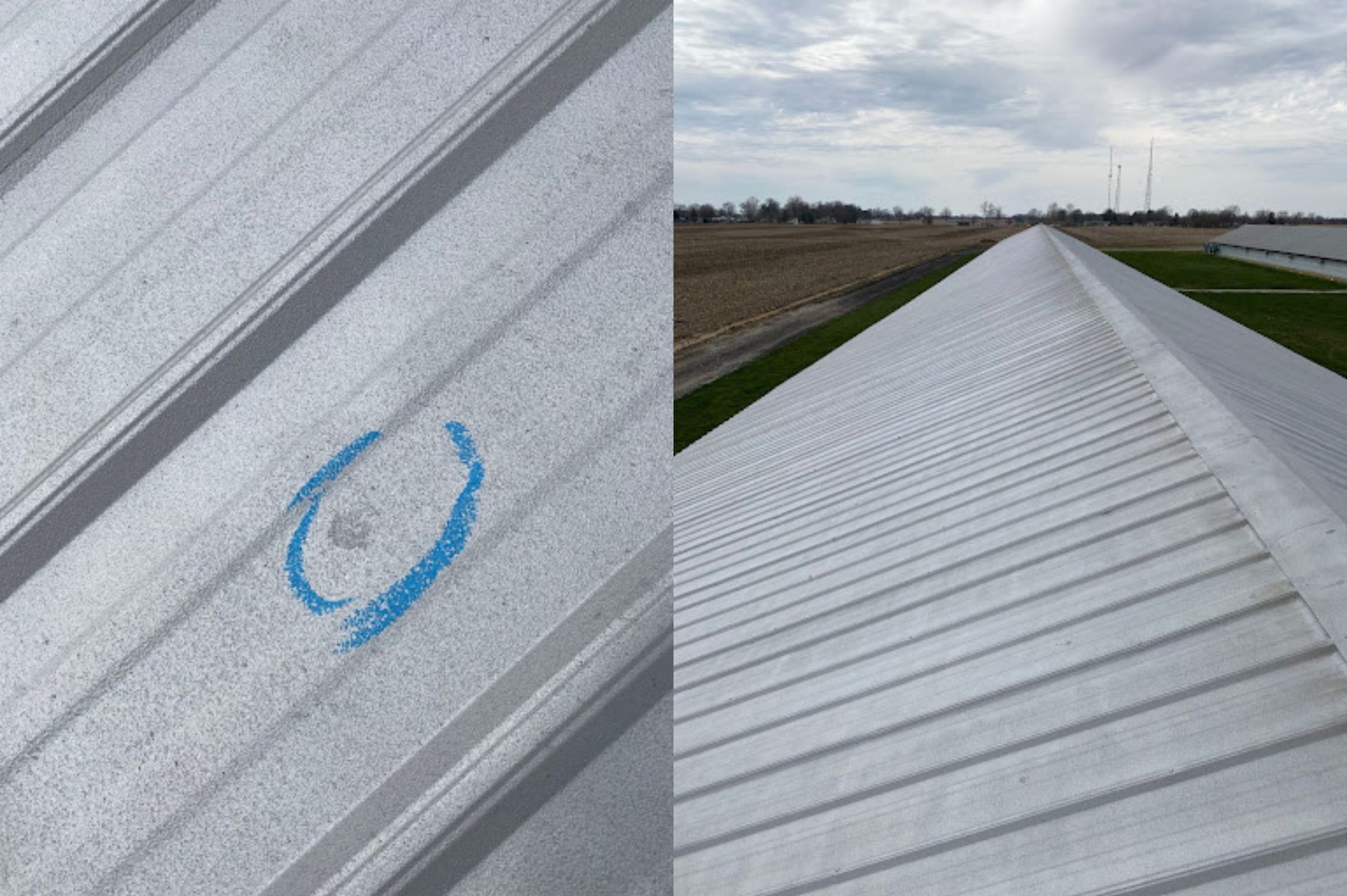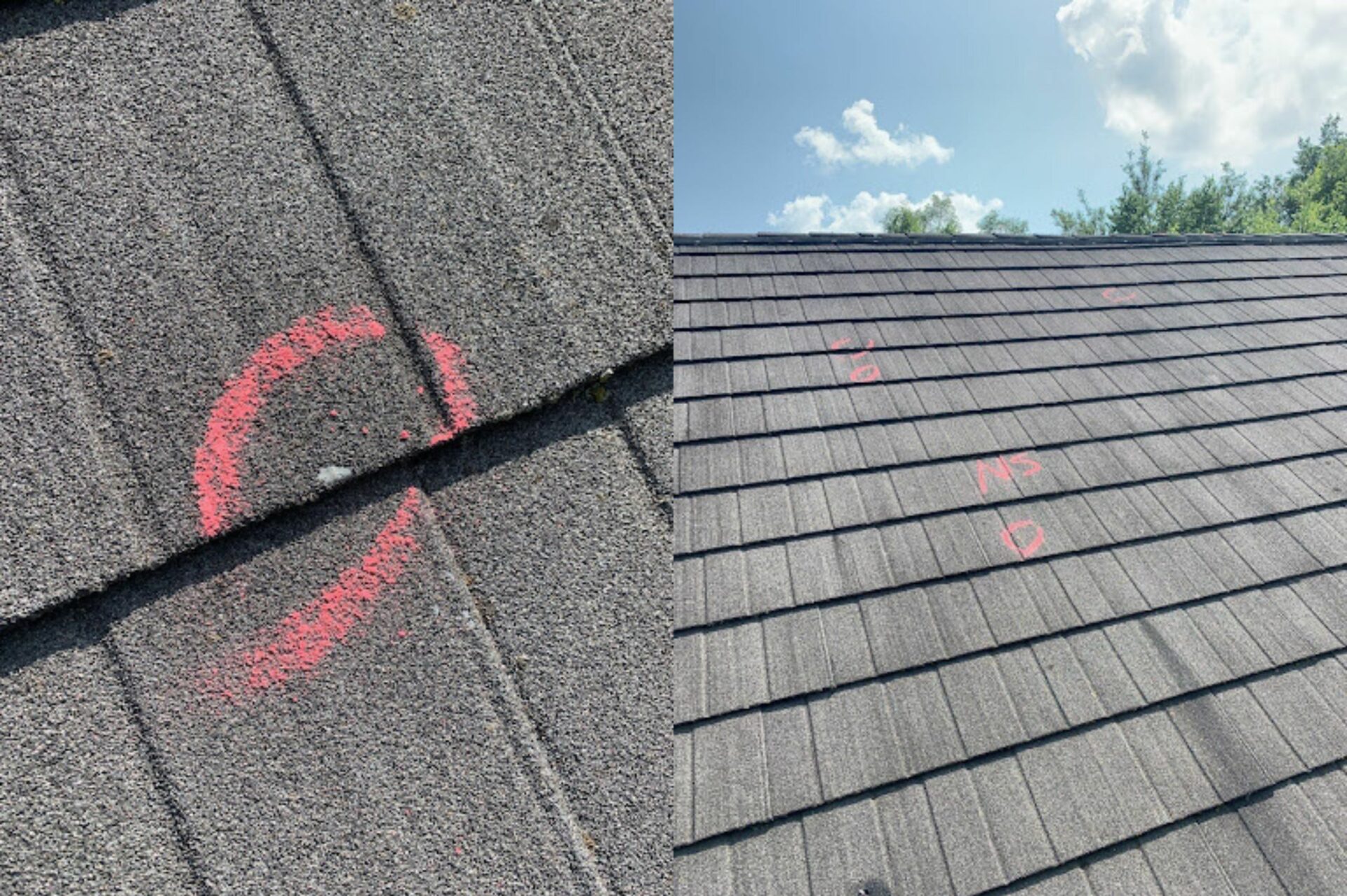Hail storms are significant contributors to property damage caused by natural disasters. Among the various structures affected, metal roofs face their own unique set of challenges. With this guide, you will be empowered with the knowledge to identify and address hail damage on metal roofs, safeguarding your investments and ensuring the long-term integrity of your properties.
Common Cosmetic Exclusions for Metal Roofs
While hail damage on metal roofs can have significant consequences, it’s essential to be aware of standard cosmetic exclusions that may impact your insurance coverage. These exclusions often relate to aesthetic issues rather than structural damage and can affect the overall claim settlement process. These exclusions limit insurance liability for minor, non-structural imperfections that do not compromise the roof’s functionality or safety. Insurers argue that covering cosmetic damage would lead to higher premiums and increased claims for minor issues. Understanding the rationale behind these exclusions helps policyholders navigate their coverage and manage their expectations during the claims process.
Minor Dents and Indentations
In many cases, minor dents and indentations caused by hail may be considered cosmetic issues rather than structural damage. Insurance policies often have limitations or exclusions regarding coverage for these types of cosmetic imperfections.

Paint Discoloration
Similarly, paint discoloration or chipping resulting from hail impacts may be deemed cosmetic and not fully covered by insurance policies. It’s essential to understand the extent of your coverage regarding paint damage and any limitations that may apply.
Granule Loss
While metal shingles are not as standard as other roofing materials, they are still susceptible to hail damage. However, insurance policies may have exclusions regarding coverage for granule loss on metal shingles, as it may not be considered structural damage to some carriers.
Understanding these standard cosmetic exclusions is crucial for property owners to assess their insurance coverage and file claims for hail damage on metal roofs. Reviewing your insurance policy carefully and consulting a licensed professional to ensure adequate coverage for structural and cosmetic damage resulting from hailstorms is important. To have your insurance policy reviewed by our experienced team, submit a policy review form: https://premier-claims.com/policy-review/
The Potential Consequences of Undetected Hail Damage
Structural Compromise
Hail-induced dents can weaken the structural integrity of metal roofs over time, potentially leading to leaks, water infiltration, and structural failures. These dents may not be immediately apparent but can worsen over time due to thermal expansion, contraction, and additional hailstorms. Addressing hail damage promptly is essential to prevent further deterioration and ensure the long-term stability of the roof structure.
Corrosion and Rust
When the protective paint coating is compromised by hail damage, exposed metal surfaces are vulnerable to corrosion and rust. Corrosion and rust can spread rapidly, causing structural damage and reducing the roof’s lifespan. Regular maintenance and timely repairs are necessary to mitigate the risk of corrosion and preserve the structural integrity of the metal roof.
Business Disruption
Undetected hail damage poses significant risks to business operations. Water infiltration resulting from roof leaks can damage interior finishes and inventory, leading to costly repairs and unplanned closures. Mold growth and compromised indoor air quality can further escalate issues, potentially forcing losses and impacting customer trust and employee productivity. Undetected hail damage could lead your business to take a big financial hit, but it can be avoided. Proactive measures such as regular inspections and prompt repairs are crucial to help minimize these risks and allow for the continuity of operations.
Mitigating the Impact of Hail Damage
Schedule Regular Inspections
Proactively schedule inspections by a licensed public adjuster to promptly identify hail damage after the date of loss. These inspections should occur at least annually, with additional assessments following severe weather events such as hailstorms. Qualified inspectors will thoroughly examine the roof for signs of hail damage, including signs of dents, paint discoloration, and granule loss. Properly documented photos of your property will be used during your claim and can come in handy in the event of future claims. To have your property inspected by our experienced licensed Public Adjusters, connect with our team: https://premier-claims.com/contact-us/
Prompt Repairs
Upon detecting hail damage during an inspection, it’s important for property owners to prioritize prompt repairs to help mitigate further damage and business disruptions. Utilizing durable materials resistant to future hail damage may enhance the roof’s durability against future storms. Failure to acknowledge preexisting damage before a new date of loss occurs may complicate your claims process.
By implementing these strategies, commercial property owners can effectively navigate hail damage on metal roofs, protecting their investment and prolonging the lifespan of their metal roof. Stay informed, stay proactive, and protect your property against the unpredictable repercussions of hail storms.

